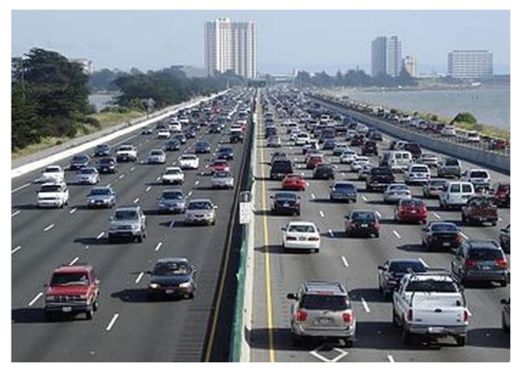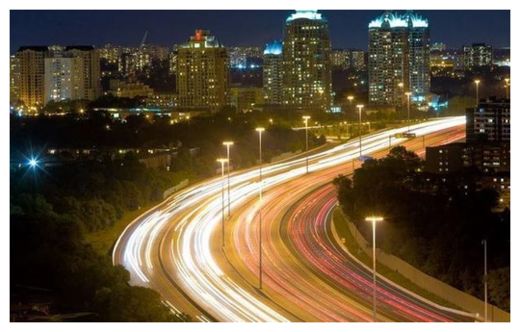We have known about the effects of motor vehicle pollution on people living near major highways for more than 20 years, yet that knowledge has not stemmed the building of tracts of homes and high-rises almost on top of those thoroughfares.
It's a vicious, never-ending cycle of increased population growth, with the need for more vehicles, leading to the need for more highways. Add to this conglomeration the increasing need for additional petroleum products and we have a problem of gigantic proportions.
Besides ongoing studies on the effects of noise pollution caused by highway noise, there have also been numerous studies on the pollution caused by vehicular emissions has on our health.
The health care community has known for a long time that people living within 300 feet of major roadways were more prone to respiratory ailments, allergies, certain kinds of cancers and heart disease. The elderly and very young children seemed to be hit even harder, studies have shown.
State and federal standards
State and federal pollution monitoring has been ongoing for a number of years, but the monitors were always set up to measure pollution over large regions of the population. Monitoring stations were never setup close to major highways because it was known the readings would be higher. This thinking led to erroneously lower levels of pollutants being reported.
Under the new Environmental Protection Agency (EPA) requirements, over 100 cities across the U.S. will have monitors strategically placed in areas close by major highways and freeways. In Southern California, it has already been found that pollution levels near freeways in Los Angeles is five to 10 times higher than levels elsewhere in the city.
In April of this year a study done by UCLA and the California Air Resources Board found that in the early morning hours, traffic pollution traveled a mile or more from Southern California highways, showing the effects of air pollution could be more widespread than previously thought.
Houston, Texas will start monitoring busy U.S. 59 in southwest Houston in January 2014. "People move to areas near major thoroughfares to get around easier, but we haven't paid attention to how that impacts our health. This is a good step forward." said Elena Craft, a health scientist for the Environmental Defense Fund.
The Houston region is made up of eight counties, and is one of the most heavily monitored areas in the country. This area is monitored for ozone, or "smog." But of the 27 monitoring stations in this area, not one had been placed near a major highway, again because the monitors were set up to measure air quality across a large region.
Health risks living near a highway
The American Lung Association's State of the Airreport for 2013 concluded that living or working 0.2 to 0.3 miles from a highway or road is more dangerous than people have been lead to believe. The ALA also says that as many as 35 to 40 percent of the North American population lives next to a "busy road."
In 2010, the Health Effects Institute published a paper on the work of a panel of scientists who had done an extensive review of 700 studies from around the world on the adverse health effects of traffic pollution.
After examination of the studies, it was concluded that traffic pollution caused asthma in children, impaired lung function, death from cardiovascular disease and COPD. For people with impaired breathing, the prolonged effects from constant breathing of polluted air can lead to early death.
One study even found that just driving or taking public transportation daily could put you at increased risk of respiratory illness or heart disease.
Whats the answer?
Traffic pollution is not just a North American problem but a worldwide problem. From China, to New York City to any major city in Europe, the air is fouled and sometimes almost impossible to breathe. And from the look of things, it is going to take another two decades to figure out just what the actual pollution levels really are.
As was said in the opening paragraph, it's a big cycle of transportation needs pitted against the need for more vehicles and affordable housing. This leads to another issue, often overlooked by scientists until recently. The majority of folks living in cities close to major highways and freeways are the least able to afford to live elsewhere.
They are our Black-Americans, often living hand-to-mouth, and often without private transportation if their own. They have been dealt a bad hand, with environment, poverty and race the main issues confronting them.
So where do we start in correcting this problem? That is a question that's going to be hard to answer any time soon. This writer leaves you, dear reader with this observation:
"One hundred and fifty years ago, the monster began, this country had become a place of industry. Factories grew on the landscape like weeds. Trees fell, fields were up-ended, rivers blackened. The sky choked on smoke and ash, and the people did, too, spending their days coughing and itching, their eyes turned forever toward the ground. Villages grew into town, towns into cities. And people began to live on the earth rather than within it." ― Patrick Ness, A Monster Calls





Reader Comments
to our Newsletter